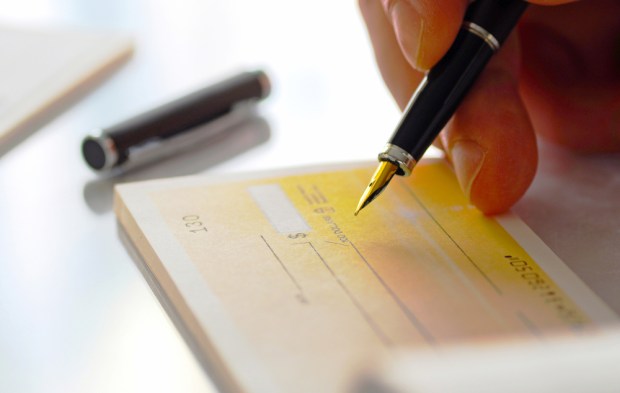Who’s Still Paying By Check In 2016?

Electronic or ePayments are simple, fast, convenient and (mostly) safe, but it’s 2016 and forms of ePayment are still not the dominant or most accepted form of payment for consumers.
Heck, many consumers still prefer paying with good, old-fashioned checks. According to statistics from the Association of Financial Professionals, 50 percent of companies were still using paper checks as of 2013.
A survey by AvidXchange and Relyco explores the current state of the payments industry in 2016 for retailers and offers some interesting insights into whose paying for what and how. The survey gathered data from 120 respondents, whose titles included “AP manager, controller, chief financial officer, finance executive, accounting director and accountant.”
When asked, “Has your organization considered implementing an electronic solution for payments?” nearly half of those surveyed responded yes, while a little bit more than 10 percent responded that their company had decided against doing so, about 23 percent had plans to “evaluate” an electronic payment option and about 19 percent said they had never evaluated it.
When asked a follow-up question as to why the business wasn’t interested in establishing an electronics payment option, the most common response was “Our current process works,” according to the survey.
“If your company is still making payments with paper checks, you’re not capitalizing on today’s best practices. By adopting ePayments and automating your AP process, you can pay vendors electronically, while maintaining all of your banking relationships and approval workflows,” according to AvidXchange.
AvidXchange believes that electronic payments don’t complicate the accounting process but rather streamline it by eliminating the need to print, sign and mail out printed checks.
But “management prefers to use paper checks” was another line heard over and over again in the survey.
“We send payments electronically internationally; however, locally, we prefer the added security of having checks signed” was another frequent response.
But what paper checks really offer is the “misconception” of control and security, according to AvidXchange.
“In a paper-based environment, documents are constantly at risk. Physical copies of sensitive information can be easily misplaced, altered or destroyed,” according to AvidXchange. “If these documents are lost or tampered with, you no longer have access to the data necessary to effectively operate your business.”
Now, here’s where the data gets really interesting.
When respondents were asked what percentage of payments their businesses were making using paper checks, a staggering 48 percent responded 76–100 percent of all payments, about 25 percent said 51–75 percent, 12 percent said 26–50 percent and about 15 percent responded 0–25 percent.
It’s kind of staggering to think that, in this day and age, with so many different technologies available for mobile or electronic payments, businesses are still mailing out so many paper checks. Guess that’s what keeps the U.S. Postal Service in business.
But AvidXchange’s research shows that 48 percent of all payment fraud can be traced back to paper checks, because a client’s or retailer’s data is not protected, and nearly 70 percent of corporate respondents reported being the victim of check fraud.
“Payment automation enforces strict adherence to business rules, reducing opportunities to commit fraud. Manual methods rely on post-payment review to detect deviations from business rules,” according to the study. “By the time you’ve detected an issue or discovered an error, the fraud has already occurred.”
“We’ve considered electronic payment solutions but have not had the time or resources to do it” was another common response, but the survey found that businesses were spending a surprising amount of time just ensuring that bills were getting paid, that clients were getting their invoices and that other general accounting practices were being maintained. In total, it amounted to the average finance staff spending the equivalent of Monday morning through Wednesday afternoon on that alone.
After crunching the data, AvidXchange advised all businesses to ditch the paper trail of checks and find some way to jump on board the ePayments bandwagon.
“The monetary savings gained through AP automation is one of the main reasons people automate in the first place. Think of it this way: the longer you wait, the less you save in the long run,” according to AvidXchange.
